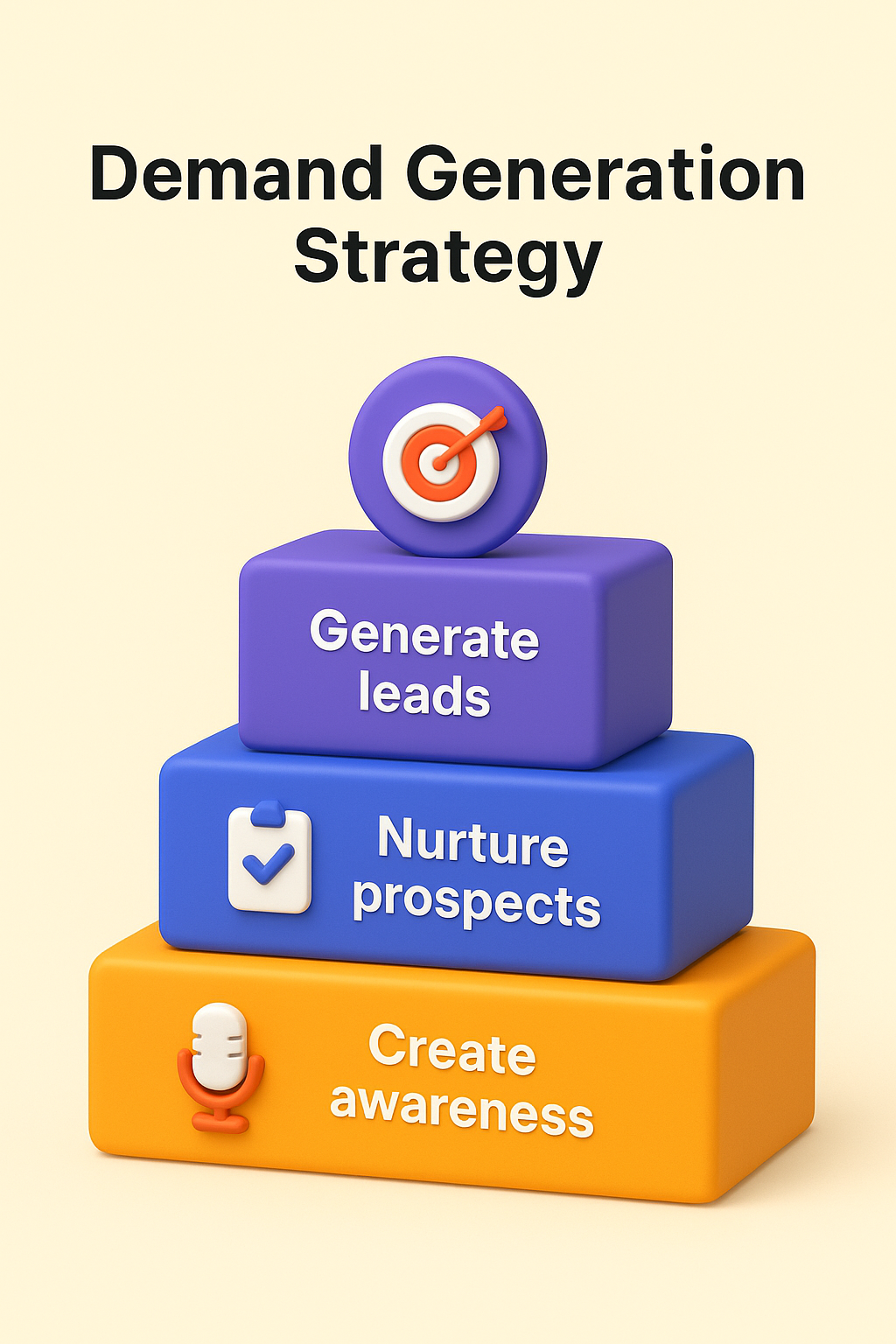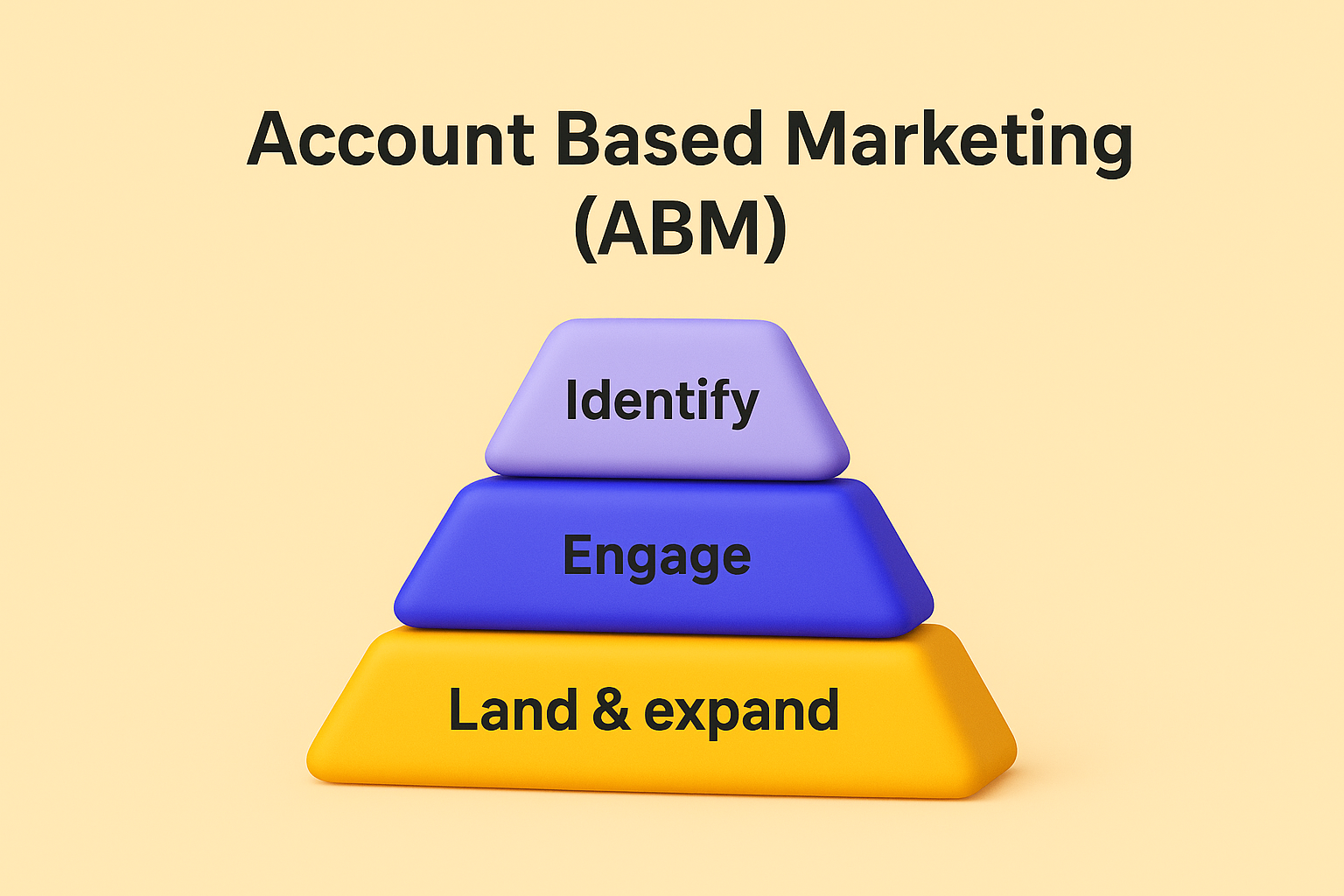How to Choose the Best Affiliate Marketing Programs for Your B2B Business
Affiliate marketing has long been a powerhouse for B2C growth, but in 2025, it’s becoming a game-changer for B2B companies too. Unlike traditional ads or outbound campaigns, affiliate partnerships allow you to leverage trusted voices and established networks to drive qualified leads, boost brand credibility, and scale revenue — all while maintaining a performance-based ROI model.
But not all affiliate programs are created equal. Choosing the right one for your B2B business requires a balance of strategic alignment, transparency, and long-term value.
Here’s how to find the affiliate marketing program that delivers measurable results.
1. Define Your Goals and Ideal Partner Profile
Before exploring affiliate platforms, get crystal clear on your objectives. Are you aiming to:
• Increase brand awareness within niche industries?
• Drive qualified B2B leads that match your ICP (Ideal Customer Profile)?
• Accelerate pipeline growth with performance-based partnerships?
Once your goals are defined, identify the type of affiliates that align with your audience — such as SaaS review sites, industry influencers, consultants, or business solution marketplaces. The best partnerships are built around shared audience relevance, not just commission structures.
2. Evaluate the Program’s Target Audience Fit
B2B buyers are deliberate and research-driven. An affiliate program that works for consumer products won’t necessarily translate to enterprise software or professional services.
Choose programs that:
• Operate in your industry vertical or niche (e.g., tech, finance, HR, logistics).
• Provide access to decision-makers — not just general traffic.
• Offer content-driven promotion models (webinars, case studies, whitepapers) instead of superficial ad placements.
This ensures your message reaches real buyers with intent, not just casual browsers.
3. Assess Transparency and Tracking Capabilities
In B2B, deal cycles are longer — which means accurate attribution is critical. Look for affiliate programs that offer:
• Real-time tracking dashboards with detailed lead and conversion data.
• Multi-touch attribution models that credit affiliates throughout the sales journey.
• Fraud prevention mechanisms to ensure lead quality.
Advanced programs integrate with CRMs like HubSpot or Salesforce, giving your sales team full visibility into affiliate-sourced opportunities.
4. Prioritize Programs That Support High-Value Offers
Successful B2B affiliate marketing thrives on value-driven offers — not discounts. Partners perform best when they can promote meaningful solutions that solve business pain points.
Focus on:
• Demo requests, free trials, or consultations instead of one-time sales.
• Programs that allow custom co-marketing content (videos, reports, landing pages).
• Tiered commission models that reward lead quality and long-term deals.
This creates mutual incentive and strengthens long-term collaboration.
5. Leverage AI and Analytics for Optimization
Modern affiliate programs increasingly use AI and predictive analytics to identify top-performing affiliates and forecast ROI. AI tools can:
• Match your brand with affiliates most likely to deliver conversions.
• Analyze historical data to fine-tune commission rates.
• Detect underperforming campaigns early, saving you wasted budget.
This data-driven precision transforms affiliate marketing from a passive channel into a predictive growth engine.
6. Build Relationships, Not Just Transactions
The best affiliate programs foster collaboration, not competition. Treat your partners like strategic allies — share performance insights, co-create content, and celebrate wins together. Building trust creates brand advocates who go beyond promotion to actively champion your solutions.
The Takeaway
The right affiliate marketing program can turn partnerships into pipelines — but success depends on alignment, transparency, and strategy. In B2B, it’s not about quick clicks; it’s about long-term value exchange and nurturing relationships that drive real business outcomes.
By choosing data-driven programs, aligning with authentic partners, and leveraging AI-powered insights, your business can unlock sustainable, scalable growth through affiliate collaboration.
Read More: https://intentamplify.com/blog/right-affiliate-marketing/
Affiliate marketing has long been a powerhouse for B2C growth, but in 2025, it’s becoming a game-changer for B2B companies too. Unlike traditional ads or outbound campaigns, affiliate partnerships allow you to leverage trusted voices and established networks to drive qualified leads, boost brand credibility, and scale revenue — all while maintaining a performance-based ROI model.
But not all affiliate programs are created equal. Choosing the right one for your B2B business requires a balance of strategic alignment, transparency, and long-term value.
Here’s how to find the affiliate marketing program that delivers measurable results.
1. Define Your Goals and Ideal Partner Profile
Before exploring affiliate platforms, get crystal clear on your objectives. Are you aiming to:
• Increase brand awareness within niche industries?
• Drive qualified B2B leads that match your ICP (Ideal Customer Profile)?
• Accelerate pipeline growth with performance-based partnerships?
Once your goals are defined, identify the type of affiliates that align with your audience — such as SaaS review sites, industry influencers, consultants, or business solution marketplaces. The best partnerships are built around shared audience relevance, not just commission structures.
2. Evaluate the Program’s Target Audience Fit
B2B buyers are deliberate and research-driven. An affiliate program that works for consumer products won’t necessarily translate to enterprise software or professional services.
Choose programs that:
• Operate in your industry vertical or niche (e.g., tech, finance, HR, logistics).
• Provide access to decision-makers — not just general traffic.
• Offer content-driven promotion models (webinars, case studies, whitepapers) instead of superficial ad placements.
This ensures your message reaches real buyers with intent, not just casual browsers.
3. Assess Transparency and Tracking Capabilities
In B2B, deal cycles are longer — which means accurate attribution is critical. Look for affiliate programs that offer:
• Real-time tracking dashboards with detailed lead and conversion data.
• Multi-touch attribution models that credit affiliates throughout the sales journey.
• Fraud prevention mechanisms to ensure lead quality.
Advanced programs integrate with CRMs like HubSpot or Salesforce, giving your sales team full visibility into affiliate-sourced opportunities.
4. Prioritize Programs That Support High-Value Offers
Successful B2B affiliate marketing thrives on value-driven offers — not discounts. Partners perform best when they can promote meaningful solutions that solve business pain points.
Focus on:
• Demo requests, free trials, or consultations instead of one-time sales.
• Programs that allow custom co-marketing content (videos, reports, landing pages).
• Tiered commission models that reward lead quality and long-term deals.
This creates mutual incentive and strengthens long-term collaboration.
5. Leverage AI and Analytics for Optimization
Modern affiliate programs increasingly use AI and predictive analytics to identify top-performing affiliates and forecast ROI. AI tools can:
• Match your brand with affiliates most likely to deliver conversions.
• Analyze historical data to fine-tune commission rates.
• Detect underperforming campaigns early, saving you wasted budget.
This data-driven precision transforms affiliate marketing from a passive channel into a predictive growth engine.
6. Build Relationships, Not Just Transactions
The best affiliate programs foster collaboration, not competition. Treat your partners like strategic allies — share performance insights, co-create content, and celebrate wins together. Building trust creates brand advocates who go beyond promotion to actively champion your solutions.
The Takeaway
The right affiliate marketing program can turn partnerships into pipelines — but success depends on alignment, transparency, and strategy. In B2B, it’s not about quick clicks; it’s about long-term value exchange and nurturing relationships that drive real business outcomes.
By choosing data-driven programs, aligning with authentic partners, and leveraging AI-powered insights, your business can unlock sustainable, scalable growth through affiliate collaboration.
Read More: https://intentamplify.com/blog/right-affiliate-marketing/
How to Choose the Best Affiliate Marketing Programs for Your B2B Business
Affiliate marketing has long been a powerhouse for B2C growth, but in 2025, it’s becoming a game-changer for B2B companies too. Unlike traditional ads or outbound campaigns, affiliate partnerships allow you to leverage trusted voices and established networks to drive qualified leads, boost brand credibility, and scale revenue — all while maintaining a performance-based ROI model.
But not all affiliate programs are created equal. Choosing the right one for your B2B business requires a balance of strategic alignment, transparency, and long-term value.
Here’s how to find the affiliate marketing program that delivers measurable results.
1. Define Your Goals and Ideal Partner Profile
Before exploring affiliate platforms, get crystal clear on your objectives. Are you aiming to:
• Increase brand awareness within niche industries?
• Drive qualified B2B leads that match your ICP (Ideal Customer Profile)?
• Accelerate pipeline growth with performance-based partnerships?
Once your goals are defined, identify the type of affiliates that align with your audience — such as SaaS review sites, industry influencers, consultants, or business solution marketplaces. The best partnerships are built around shared audience relevance, not just commission structures.
2. Evaluate the Program’s Target Audience Fit
B2B buyers are deliberate and research-driven. An affiliate program that works for consumer products won’t necessarily translate to enterprise software or professional services.
Choose programs that:
• Operate in your industry vertical or niche (e.g., tech, finance, HR, logistics).
• Provide access to decision-makers — not just general traffic.
• Offer content-driven promotion models (webinars, case studies, whitepapers) instead of superficial ad placements.
This ensures your message reaches real buyers with intent, not just casual browsers.
3. Assess Transparency and Tracking Capabilities
In B2B, deal cycles are longer — which means accurate attribution is critical. Look for affiliate programs that offer:
• Real-time tracking dashboards with detailed lead and conversion data.
• Multi-touch attribution models that credit affiliates throughout the sales journey.
• Fraud prevention mechanisms to ensure lead quality.
Advanced programs integrate with CRMs like HubSpot or Salesforce, giving your sales team full visibility into affiliate-sourced opportunities.
4. Prioritize Programs That Support High-Value Offers
Successful B2B affiliate marketing thrives on value-driven offers — not discounts. Partners perform best when they can promote meaningful solutions that solve business pain points.
Focus on:
• Demo requests, free trials, or consultations instead of one-time sales.
• Programs that allow custom co-marketing content (videos, reports, landing pages).
• Tiered commission models that reward lead quality and long-term deals.
This creates mutual incentive and strengthens long-term collaboration.
5. Leverage AI and Analytics for Optimization
Modern affiliate programs increasingly use AI and predictive analytics to identify top-performing affiliates and forecast ROI. AI tools can:
• Match your brand with affiliates most likely to deliver conversions.
• Analyze historical data to fine-tune commission rates.
• Detect underperforming campaigns early, saving you wasted budget.
This data-driven precision transforms affiliate marketing from a passive channel into a predictive growth engine.
6. Build Relationships, Not Just Transactions
The best affiliate programs foster collaboration, not competition. Treat your partners like strategic allies — share performance insights, co-create content, and celebrate wins together. Building trust creates brand advocates who go beyond promotion to actively champion your solutions.
The Takeaway
The right affiliate marketing program can turn partnerships into pipelines — but success depends on alignment, transparency, and strategy. In B2B, it’s not about quick clicks; it’s about long-term value exchange and nurturing relationships that drive real business outcomes.
By choosing data-driven programs, aligning with authentic partners, and leveraging AI-powered insights, your business can unlock sustainable, scalable growth through affiliate collaboration.
Read More: https://intentamplify.com/blog/right-affiliate-marketing/
0 Комментарии
0 Поделились





